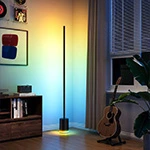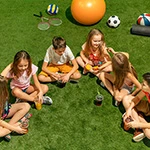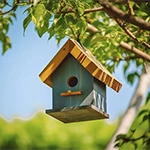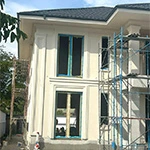Young people of new generations are more involved in conserving biodiversity around their homes
We see an increased tendency among young people of the new generations to accept and support biodiversity around the house. New passive house projects contain elements that contribute to protecting the environment and local ecosystems.
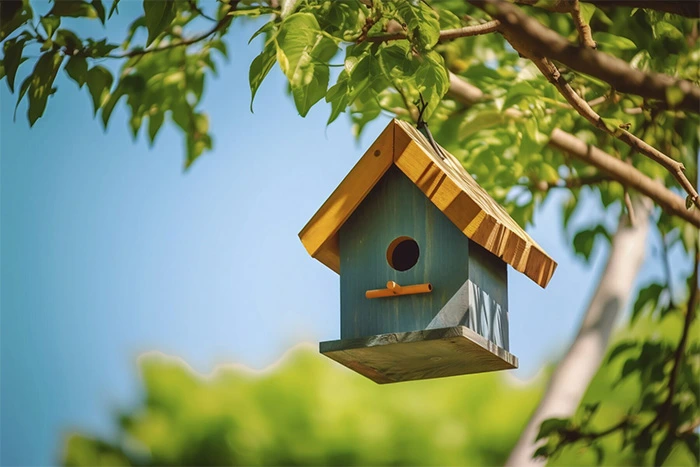
The young people of the new generations are more open and better informed about environmental and biodiversity issues. Easy access to information through the internet and environmental education in schools helps them understand that biodiversity conservation is just as important as passive house design and construction.
Young people are more concerned about the impact of climate change on the planet and understand that biodiversity conservation is one of the keys to reducing this impact. Analysis of the losses recorded in recent years due to extreme weather phenomena helped them to realize the importance of a stable ecosystem. A passive house built in an area exposed to climate change is at risk of total loss regardless of the performance of personal protection systems.
New generations are increasingly interested in organic gardening and creating sustainable living spaces for plants and animals. They learn to create biodiversity-friendly environments around their homes and frequently participate in communities that promote environmental conservation.
Passive houses are buildings designed and built according to the principles of passive architecture, which aim to minimize energy consumption for heating and cooling the building. These buildings are designed to maximize energy efficiency and thermal comfort, using strong insulation, effective room sealing, high-performance windows and doors, controlled ventilation, and other design strategies.
Using a thermally efficient ventilated facade as part of a passive house can contribute to better thermal insulation and heat transfer control. This helps to reduce heat loss in the cold season and heat accumulation in the warm season, thus contributing to a comfortable indoor environment and reducing energy requirements for heating and cooling.
A well-designed ventilated facade integrated into a passive house can provide controlled ventilation and efficient removal of moisture and condensation. This helps maintain a healthy indoor environment with good air quality.
Ventilated facades can be made of durable materials with a long service life, which contributes to the overall durability of the building. Combined with the principles of passive architecture, they can create sustainable buildings with low resource consumption in the long term.
It is important that the integration of ventilated facades in a passive house is done properly, taking into account aspects such as air tightness, thermal insulation, controlled ventilation systems and the overall design of the building. At the same time, it is important to pay attention to the correct design and management of ventilated facades, including to promote biodiversity and ensure that they are sustainably integrated into the urban environment.
Thanks to the effective collaboration between specialists in architecture, sustainable construction and biodiversity, the new passive house projects contain elements to protect local biodiversity.
The new generations have learned how to share the house with the birds. The methods of developing one’s own comfort are now complemented with techniques to protect biodiversity. Each homeowner shares the space with a tree, a plant, an insect, a bird, a pet.
Ventilated facades can be designed to provide spaces for plants, including the establishment of vertical gardens or the use of support systems for climbing plants.
This can create additional green space in the urban environment, providing food and shelter for insects, birds and other small animals.
The choice of suitable plants for the ventilated facade can be made according to the ability to attract and support pollinating insects such as bees and butterflies. Plants that produce flowers or fruits can provide food for these insects and help maintain pollination and diversity within the urban environment.
Planting specific species of climbing plants or using special support structures can create an environment where insects can take shelter. The choice of plants is made depending on the aesthetic aspect and the desired utility. Experts in exterior design are forced to complete their studies with elements from biodiversity in order to be able to recommend the best solutions.
On the ventilated facades or near them, artificial nests specially designed for different species of birds can be installed.
These can be placed in suitable gaps or spaces, giving birds a safe place to build their nests and raise their young. Ventilated facades may include dedicated structures for supporting bird nests. These can be in the form of plates or special structures that provide a protected and safe place for nesting.
Certainly these nests will require additional maintenance in the areas where they are located.
- Noise: Bird nests can be noisy, especially during the breeding season. This can disturb the inhabitants of the house, especially if the nests are located very close to windows or areas where people rest.
- Bird droppings: Nests can lead to the accumulation of bird droppings near the house. These droppings can be aesthetically unappealing and contain harmful chemicals.
- Diseases and allergies: Bird droppings can contain pathogens that can cause diseases or allergies in humans. It is important to maintain proper hygiene around bird nests.
- Building destruction: Nests can cause structural damage to buildings if they are built in inappropriate places or if the birds are too numerous.
But, the expenses for this maintenance are insignificant compared to the advantages that the presence of bird nests near us has for our health.
According to recent studies, we are facing an alarming increase in cases with mental problems. Their treatment is very expensive and long-lasting. If you knew that the presence of a bird’s nest near the front door would help you avoid such treatment, would you accept it and take care of it? Prevention is cheaper and more convenient than treatment.
Watching birds in their nests can be a relaxing and educational activity. Here are some advantages of this activity:
- Relaxation: Watching birds in their natural environment can have a relaxing effect on people. It’s a wonderful way to escape from everyday stress and connect with nature.
- Education: Watching birds in their nests can provide learning opportunities. You can learn more about the bird species that populate your area, their habits, breeding seasons and more. It’s a great way to educate children or connect with nature.
- Ecological awareness: Through bird watching, people can develop a greater awareness of the environment and the importance of conserving natural habitats. This can lead to a more responsible attitude towards the environment.
- Applying knowledge: Bird watching can help you understand the connection between birds and the ecosystem in which they live. This can give you information on how to help protect the environment and natural habitats.
To make bird watching more enjoyable, you can place bird nests in strategic places in the garden or on the terrace of the house. Using binoculars or a bird book can help you identify bird species and better understand their behavior. It’s a great activity for anyone who loves nature and wants to enjoy the world of aviation in their own backyard.
Instead of watching a YouTube channel with nature recordings, you can watch the neighboring bird’s nest. There is a diverse range of video cameras that can be placed in bird nests. There are also bird nests with built-in video cameras, specially designed for those who are passionate about these activities.
I saved another example for last. And you can do the same. Try. We guarantee that you will feel extraordinary and you will thank us.

